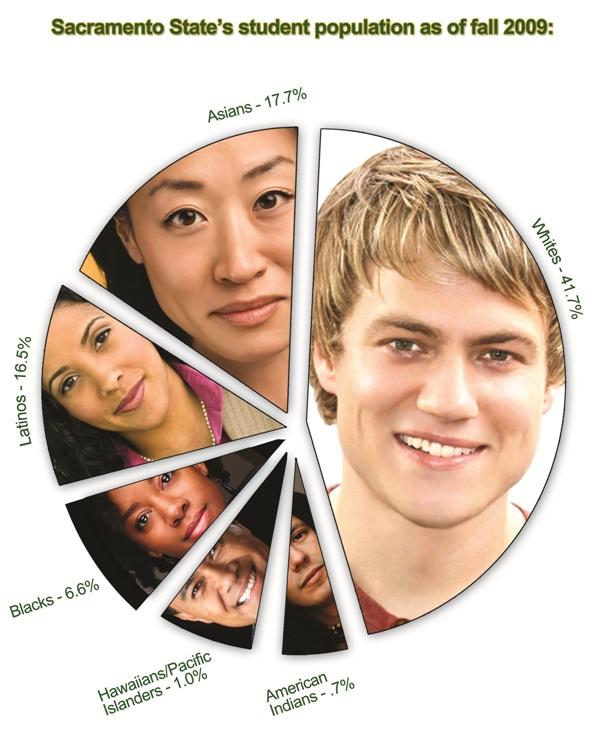Sac State minority enrollment stays flat
October 20, 2010
Despite a major upturn in growth among Sacramento State minority students in the 1970s, “80s and “90s, ethnic enrollment in the last decade has been flat.
Since 2000, the Latino population on campus has increased by about 2 percent. Caucasian enrollment has decreased by 5 percent and Pacific Islanders by less than half a percent, according to the Office of Institutional Research.
Trends among other ethnic groups have been similar.
“It’s been a little bit up and a little bit down for every minority. All recent changes are marginal,” said Jing Wang, Sac State’s director of institutional research.
The numbers might be better explained by looking outside of Sac State.
“Our admissions trends have mirrored the high school graduation trends in the greater Sacramento region,” said Ed Mills, associate vice president of enrollment. “Many people look at Sac State’s population and wonder why demographics have not changed more &- but it’s important to look at high school graduates vs. the population at large. In that area, there is not much variance.”
However, it is still fair to say Sac State is a diverse campus, especially by national standards.
Across the U.S., minority groups make up 32 percent of overall college enrollment, but at Sac State that number is almost 50 percent, according to the Office of Institutional Research.
“If you put all the ethnic groups together (at Sac State), it’s really close to the white population. Not there yet, but almost,” Wang said.
Since 1973, the first year Sac State kept track of minority enrollment statistics, the number of Latinos on campus has risen from 338 students to 4,400 &- an increase of more than 13 percent, according to the Office of Institutional Research.
Latinos now make up about 18 percent of the student population.
The Southeast Asian population went from zero students in the 1970s, to fewer than 100 in the late 1980s, to more than 1,300 students in 2009, according to the Office of Institutional Research.
“We do have a richly diverse campus, as most California campuses do. It’s a reflection of the rich diversity of our state,” Mills said.
Minority enrollment across the 23-campus CSU system has not changed drastically in the last decade either.
Total enrollment among Mexican-Americans went from 15.1 percent in 1999 to 17.9 percent in 2008, according to CSU statistical reports. In 2008, there were 64,900 Mexican-American students enrolled across the CSU system, the reports state.
Caucasian enrollment at CSU went from 37.8 percent in 1999 to 35.5 percent in 2008, the reports state. There were 128,600 white students enrolled at the CSU in 2008.
Pacific Islander enrollment increased by just .2 percent from 1999 to 2008, the reports state. Enrollment changes for other ethnic groups were similarly minor.
The CSU actively reaches out to minority groups in providing information about applying to the CSU, said spokesman Erik Fallis.
However, ethnicity is not a factor in CSU admissions decisions, Fallis said.
“Diversity is very important to our university, and the CSU is among the most diverse public higher education systems in the nation,” Fallis said.







































































































































